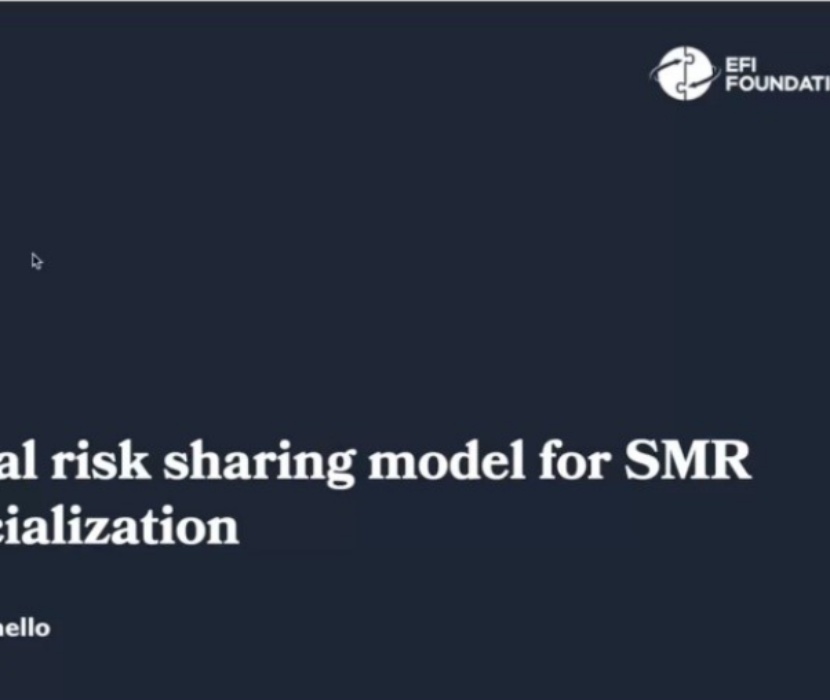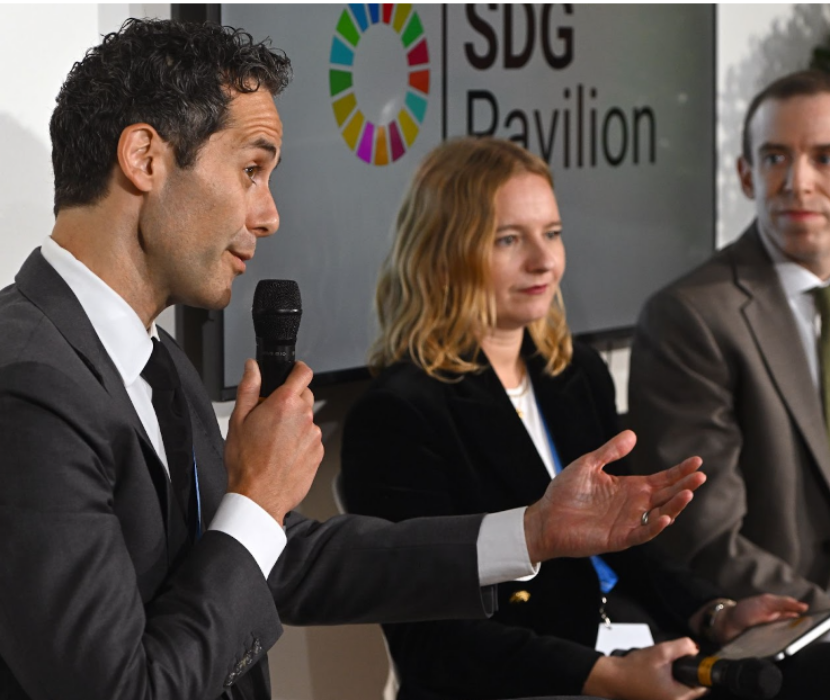On June 1, the Energy Futures Initiative (EFI) convened Gulf Coast hydrogen leaders for a public workshop on developing a market for clean hydrogen. This is the third in a series of EFI regional hydrogen workshops and reports set to understand from the bottom-up what communities and key stakeholders are doing in the hydrogen sector and what policies may be needed to activate a clean hydrogen market.
The Gulf Coast–the coastline along the U.S. southern states and the Gulf of Mexico–is where a large portion of the U.S. hydrogen industry operates today. Its existing infrastructure for hydrogen, oil, and natural gas production, along with the people with the right skill sets to operate this infrastructure, position it to be a potential leader in an emerging clean hydrogen industry.
Hydrogen is on the rise as an alternative fuel source and climate solution. When it is derived through certain processes, hydrogen can reduce carbon emissions and provide a clean source of energy. According to panelist Colette Honorable (ReedSmith LLP), hydrogen is projected to reduce carbon dioxide emission by 16% by 2050 and produce 150 billion in revenues and provide 700,00 jobs by 2030, including preserving existing jobs. Capitalizing on existing infrastructure can pave the way for hydrogen’s success.
In EFI’s workshop, Gulf Coast stakeholders discussed their current and future economic trajectories for hydrogen production and infrastructure. After opening remarks by EFI CEO and thirteenth Secretary of Energy Ernest Moniz, three expert panels launched into focused discussion followed by a fireside chat between Moniz and former Louisiana U.S. Senator Mary Landrieu.
Leveraging Incumbents and Existing Infrastructure (Panel 1)
In the first panel, moderated by Kenneth Medlock (Senior Director of the Center for Energy Studies at Rice University), panelists said their companies in the Gulf Coast are already leveraging existing infrastructure for clean hydrogen projects. They said improving the regulatory and business framework will make it easier for those companies to make the necessary investments.
Industrial gas supplier company Air Products operates the world’s largest hydrogen pipeline network. The company is now leveraging that infrastructure for a $4.5 billion low-carbon hydrogen project to be developed on the Louisiana coast. Simon Moore (Air Products Vice President of Investor Relations, Corporate Relations, and Sustainability) said Air Products chose Louisiana for this project because of its 50-year history there, the “excellent, well-trained workforce,” and the ability to leverage their existing infrastructure. “You don’t need a new pipeline for lower-carbon hydrogen,” Moore said. “The hydrogen molecule doesn’t know what color it is.”
Dilanka Seimon (Energy Transfer Vice President of Alternative Fuels) said his company’s pipeline network is already connected to most industrial areas in the U.S. Gulf Coast and could be repurposed to transport hydrogen and renewable fuels and to support infrastructure for carbon capture projects. Energy Transfer’s pipeline network currently supplies customers with energy and industrial feedstocks, including natural gas, crude oil, and propane. Seimon said Energy Transfer sees the need for additional pipeline storage and terminal capacity to complement existing infrastructure.
“We have an existing infrastructure. We have the experts. We have the workforce… Now we need to align the regulation and the policy drivers to support this work,” said Colette Honorable, former commissioner of the Federal Energy Regulatory Commission (FERC) and current Partner at ReedSmith LLP. Honorable suggested that a mandate from Congress for FERC to inform a regulatory process is necessary for creating certainty. Honorable and Medlock discussed the need for policies to increase demand for low-carbon fuels, such as California’s low-carbon fuel standard actually, which incentivizes low-carbon fuels without dictating production methodology.
U.S. Department of Energy Hydrogen Hubs (Panel 2)
The second panel, moderated by Charles Boustany (Former U.S. Congressman for the State of Louisiana) examined the U.S. Department of Energy (DOE) hydrogen hubs initiative for broader market formation.
“We found that a lot of the challenges of broader energy transition questions are not primarily technological or even economic; they’re really primarily social and cultural,” said Jason Beckfield, Professor of Sociology at Harvard University.
Janice Lin (Founder and President of the Green Hydrogen Coalition) and Brett Perlman (CEO, Center for Houston’s Future) said it is critical to focus on how the recipient community benefits, in addition to focusing on the economics and demand for hydrogen. DOE is aware of damage done by the fossil fuel industry by previously disregarding communities, and so is requiring that hydrogen hub projects are designed with a justice strategy.
Lin noted that communities and cultural disagreements can stunt hydrogen projects, making community stakeholder engagement critical. Histories of community exclusion and oppression can similarly inhibit projects. While Lin suggested communities be encouraged to set past grievances aside, Beckfield suggested that a better approach would be to face these difficulties.
Perlman also urged using a collaborative rather than competitive lens in developing the national hydrogen industry. Creating a “network of markets”—a goal of the DOE’s initiative—can help the industry grow and encourage regions to learn from each other. Relatedly, Lin suggested that the Gulf Coast learn from other regions and “harmonize on an appropriate carbon intensity framework,” an objective of DOE and many environmental groups.
Current and Potential Hydrogen Offtakers (Panel 3)
In a discussion moderated by Lisa Frantzis (Partner in Energy, Sustainability, and Infrastructure at Guidehouse), panelists discussed cost, price certainty, and project investment in the context of factors impeding hydrogen industry development and what can be done to ameliorate them.
“Being able to have a standard framework with which we can account for the carbon intensity is going to be front and center the biggest challenge we face,” said Ramanan Krishnamoorthi, Professor and Chief Energy Officer at the University of Houston. Hunter Johnston (Partner at Steptoe & Johnson LLP) said that a carbon intensity framework can unlock premiums for certain products, enabling industry growth.
The participants discussed more applicable solutions to address foreseeable impediments to the industry. Krishnamoorthi echoed a remark by Johnston that contracts, including careful consideration of take-or-pay contracts, are likely to be significant factors facilitating industry growth.
Perhaps two of the easiest solutions to overcoming demand barriers, Krishnamoorthi said, are incentives for fuel switching and carbon pricing. Brad Markell (Executive Director of the Industrial Union Council at AFL-CIO) explained that decisions around how the market develops focus on responses to who is currently using hydrogen and what kind of changes in application they are looking to develop, implying that certainty will be key.
Krishnamoorthi said that one of the best ways the Gulf Coast can maximize the region’s hydrogen market is by creating a microcosm for the product. He continued that in the Gulf Coast, the best application of hydrogen would be heavy-duty transportation and creating a network for heavy-duty transportation. With similar urgency, Johnston commented that an index for hydrogen similar to what exists for natural gas could significantly help drive investment and price certainty for project developers.
Fireside Chat
Mary Landrieu, Former Senator for the State of Louisiana, mirrored EFI’s mission by emphasizing that the focus must be on emissions rather than specific technologies and fuels. Further, she commented that ostracizing key players in energy, like the fossil fuel industry, impedes progress on emissions reduction progress. She implicated coalition building as a key factor in developing hydrogen as a cleaner energy alternative, especially for heavy transport.
“Instead of focusing on the fuel, focus on the emissions,” Landrieu said.
Landrieu also discussed regulatory gaps and suggested that FERC rather than the Pipeline and Hazardous Materials Safety Administration regulate the industry and necessary pipeline infrastructure. She also highlighted congressional discussion on developing carbon adjustment and carbon pricing as regulatory and market tools.
Keep an eye out for the release of the EFI’s official summary report highlighting the key takeaways from the discussion and industry stakeholders.
– Angie Kaufman
(Share this post with others.)




